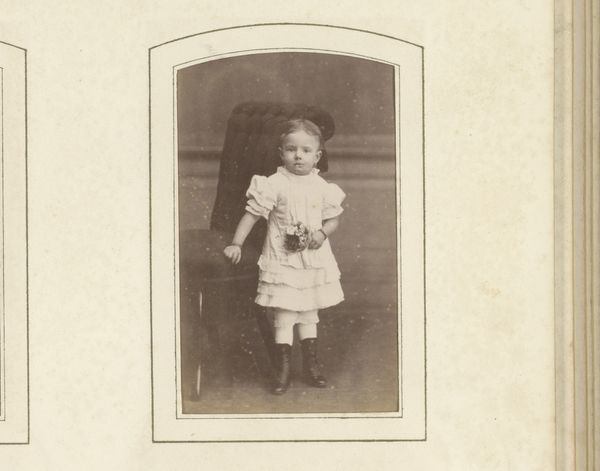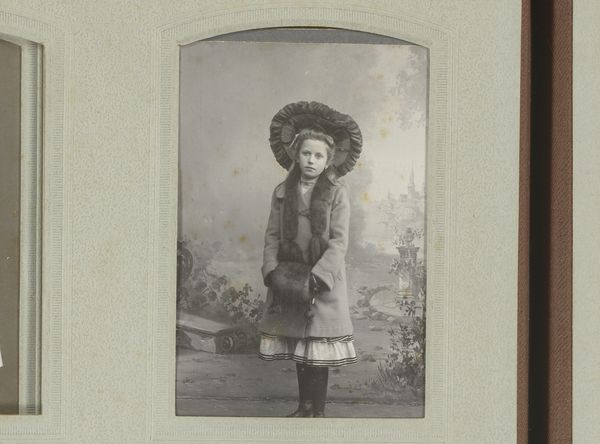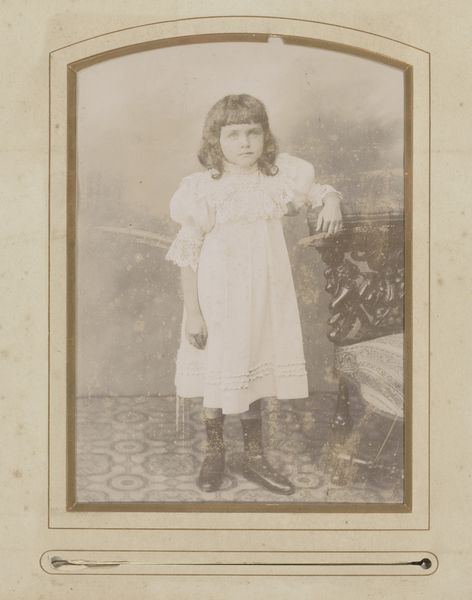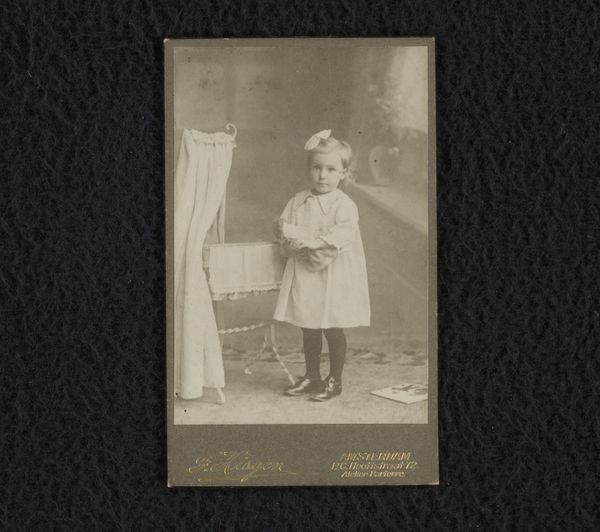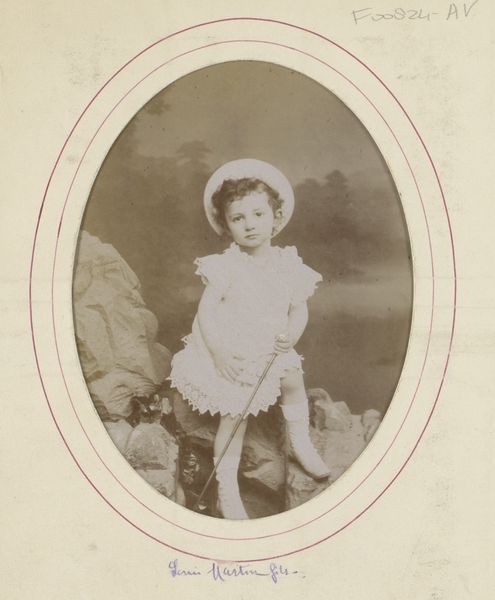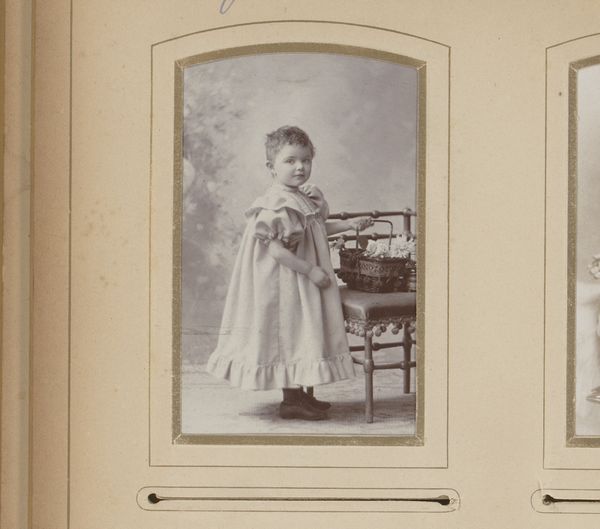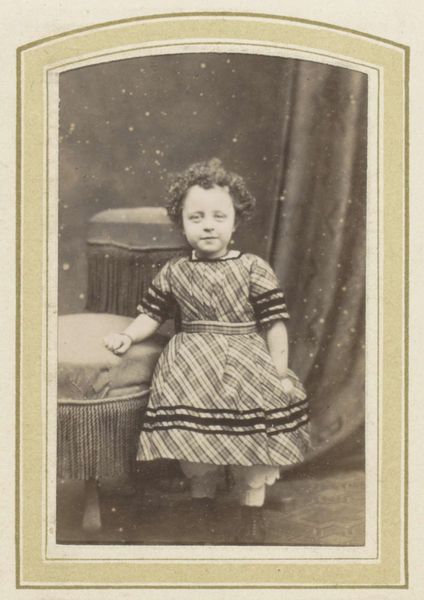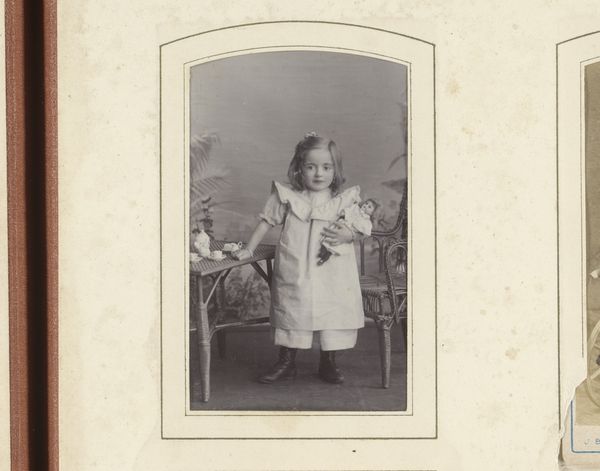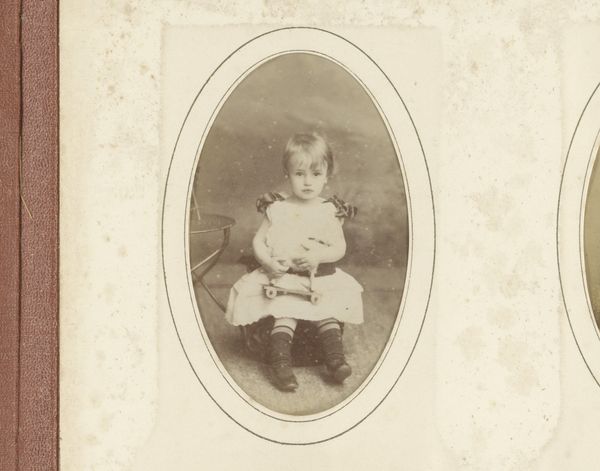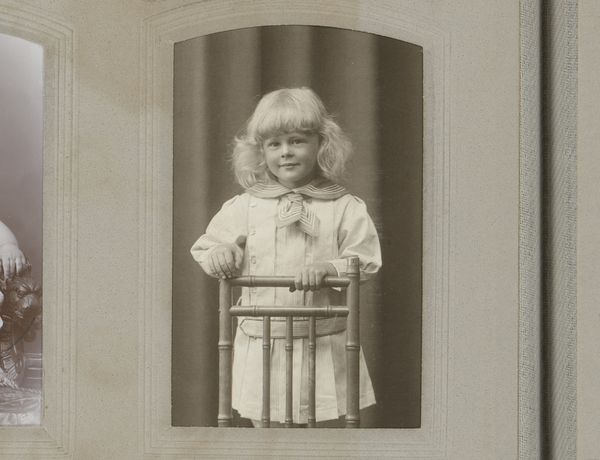
photography
#
portrait
#
flower
#
charcoal drawing
#
figuration
#
photography
#
watercolor
Dimensions: height 111 mm, width 81 mm
Copyright: Rijks Museum: Open Domain
Editor: This is "Portret van een meisje met een bloemenkrans," or "Portrait of a Girl with a Flower Crown," dating from the early 1900s. It looks like it might be a photograph, perhaps touched with watercolor or charcoal. There’s a stillness to the image that's quite captivating. What can you tell me about it? Curator: The process of producing this image, likely involving a lengthy exposure time and meticulous darkroom work, is key to understanding its quiet power. Consider the materiality – the tangible weight of the photographic paper, the manipulation of light-sensitive chemicals. These were commodities, bought and sold. How does that relate to the representation of childhood here? Editor: That's interesting. It makes me think about the formal clothes she's wearing. It does appear to be quite a deliberate creation, doesn't it? Curator: Precisely. Think about the labor involved in crafting both the garment and the image. Who profited from her sailor suit? Whose hands arranged that flower crown? Photography, in this period, straddled the line between technological advancement and artisanal craft, democratizing portraiture, but also reinforcing existing social structures through material practices and control over who gets to be seen and how. Editor: So you're suggesting that even in a seemingly innocent image like this, we can see the traces of economic and social forces at play? Curator: Absolutely. The very act of producing and consuming this image was embedded within a complex network of production, distribution, and power dynamics that dictated even simple details of how people were represented in early 20th century society. What stories could that materiality tell us? Editor: This has totally changed how I see this image. Thanks! Curator: The pleasure is all mine.
Comments
No comments
Be the first to comment and join the conversation on the ultimate creative platform.

